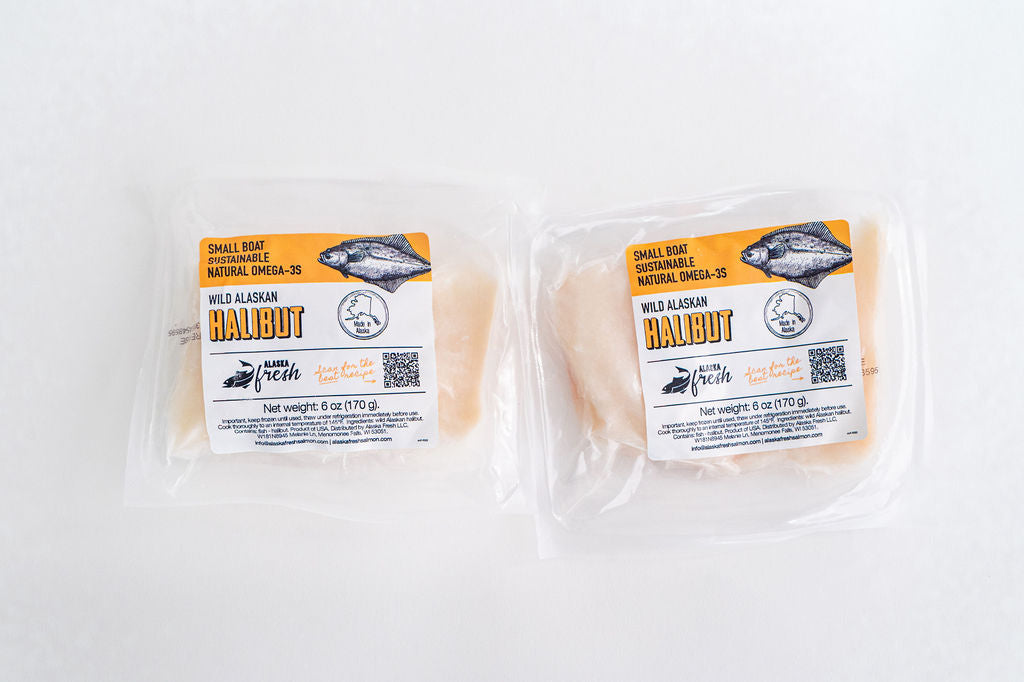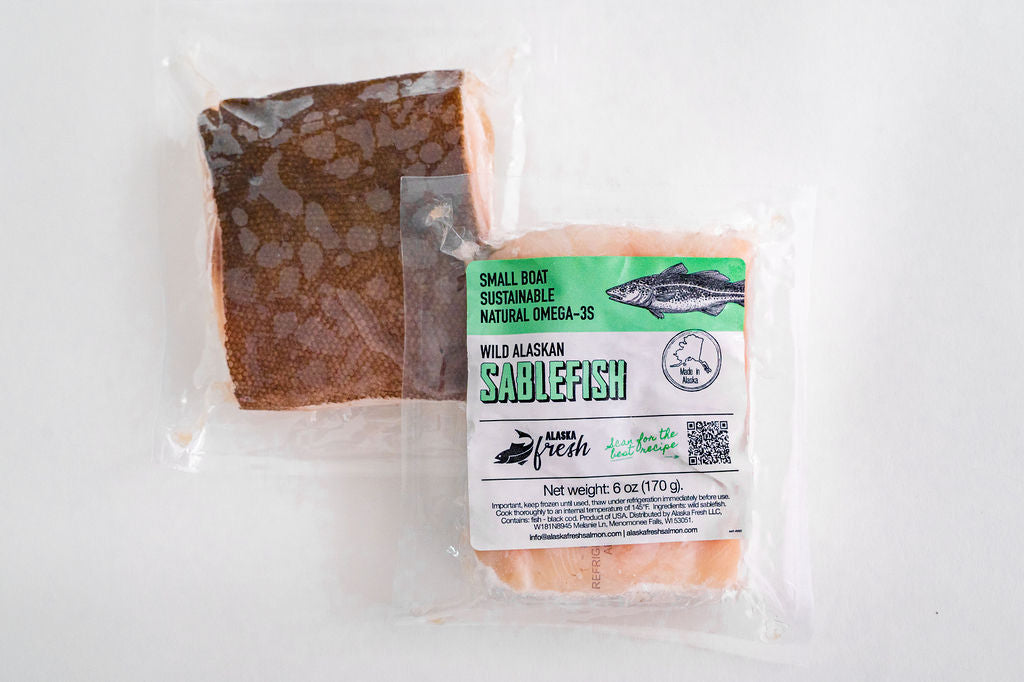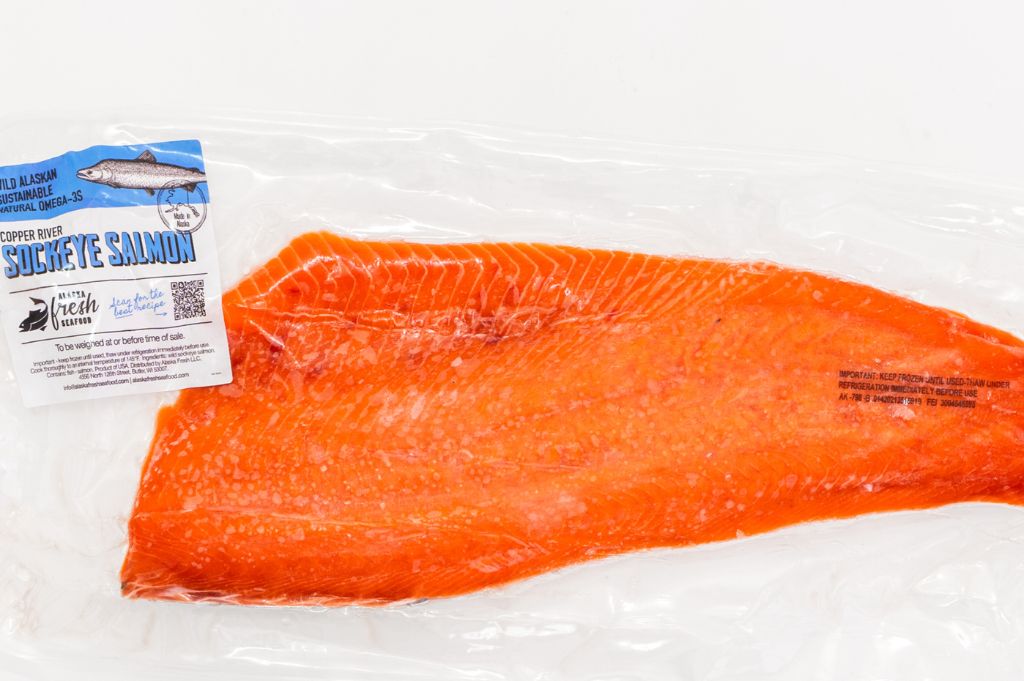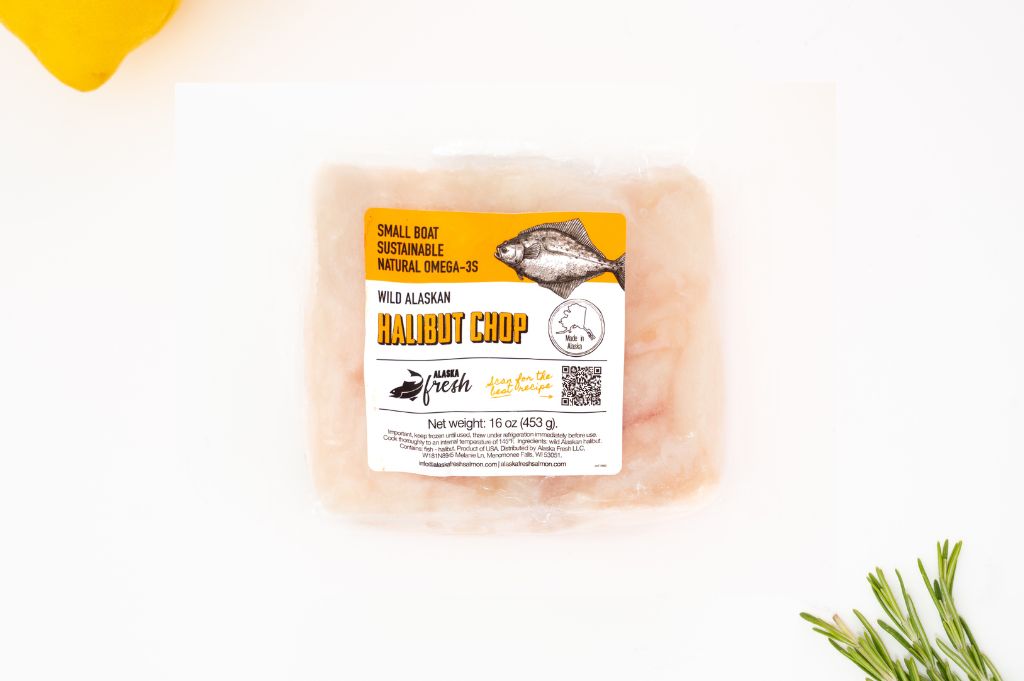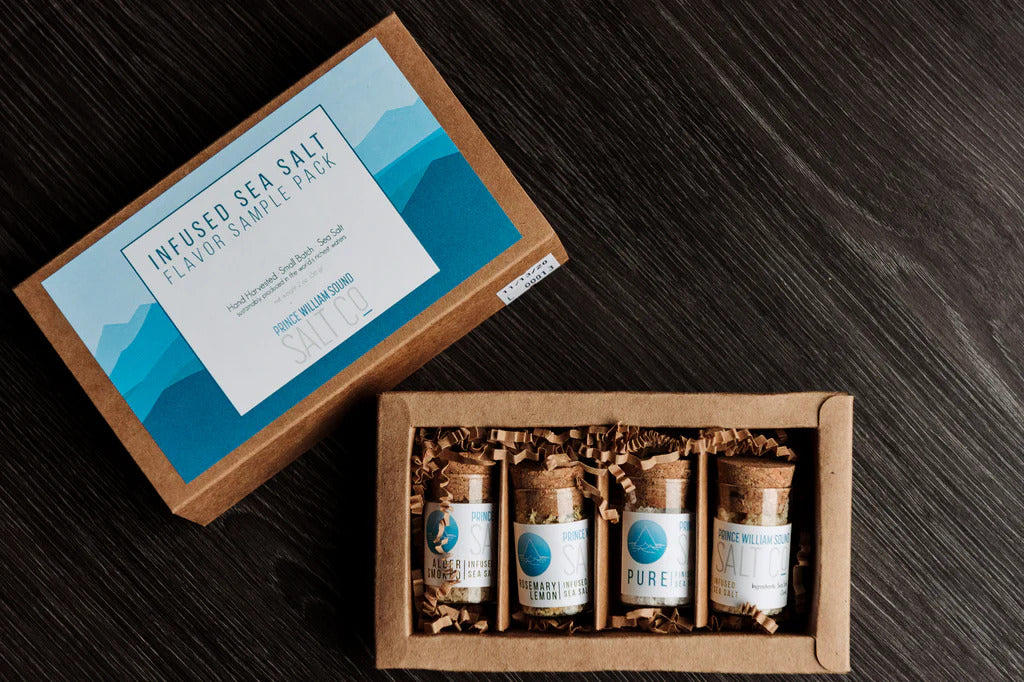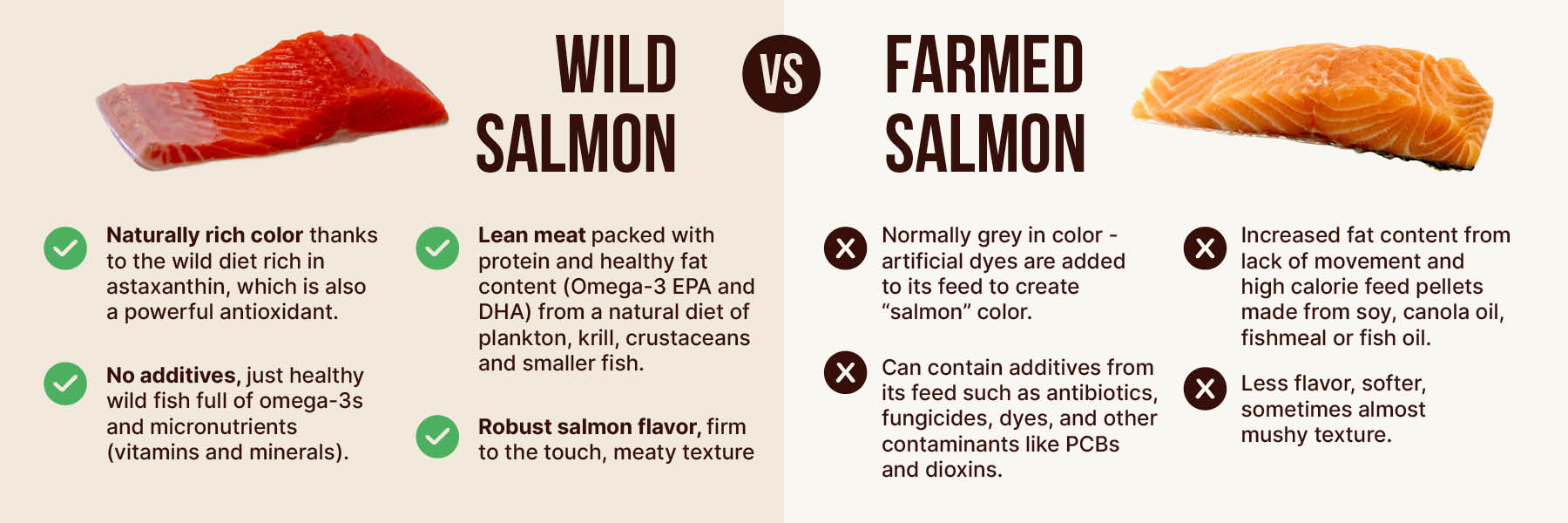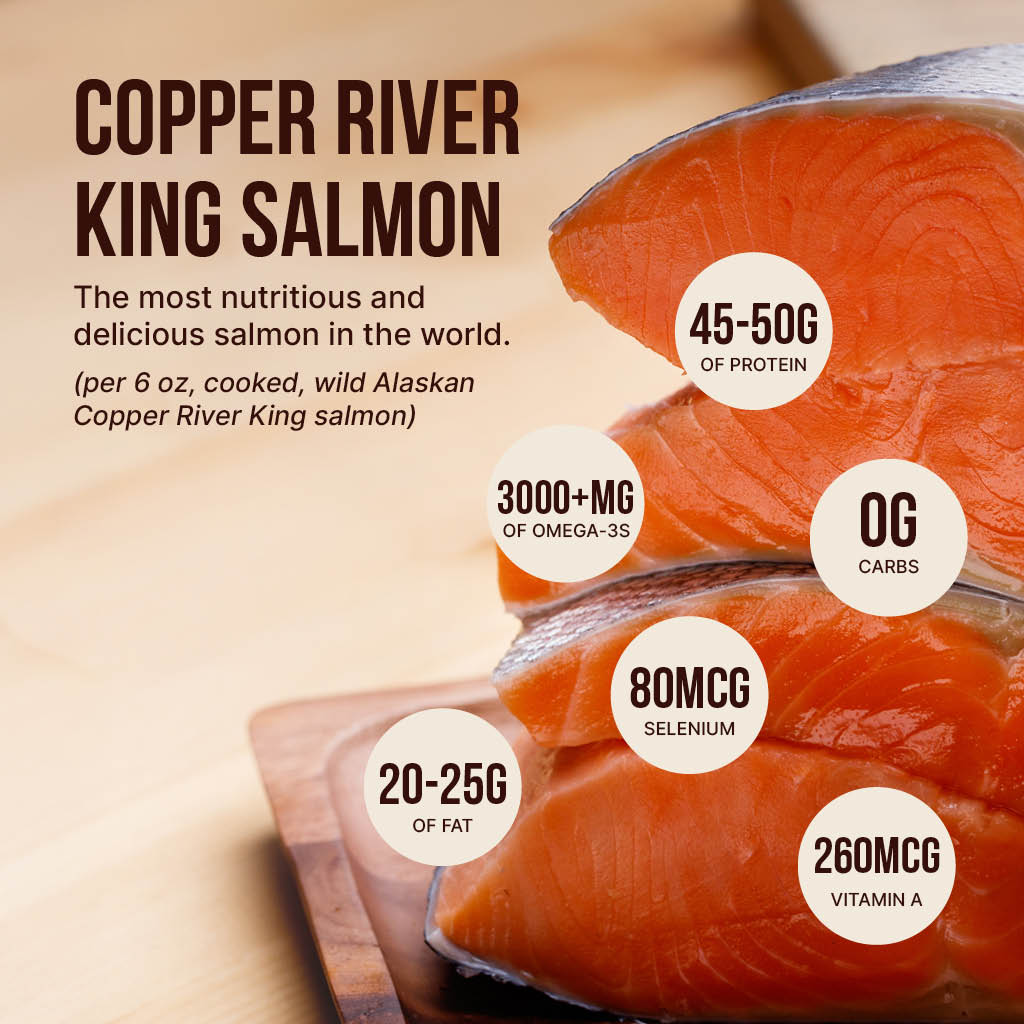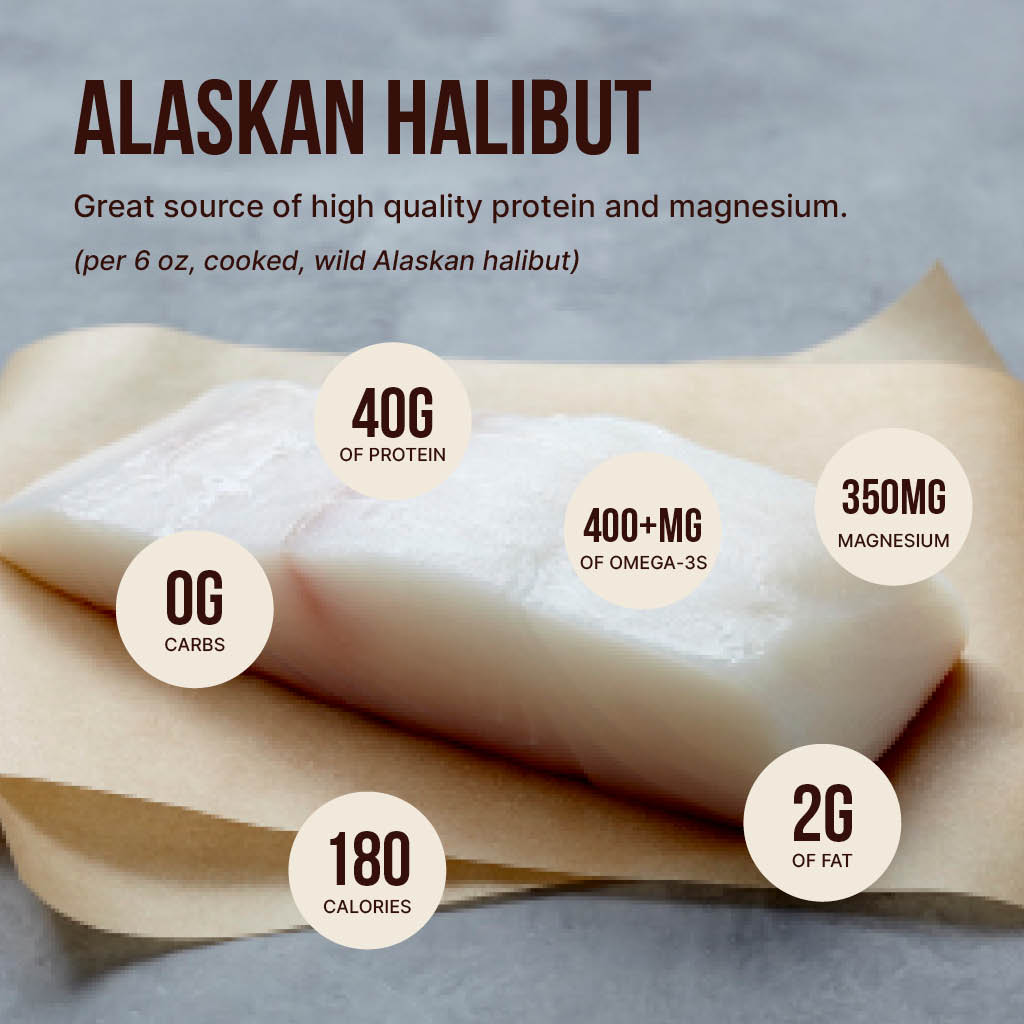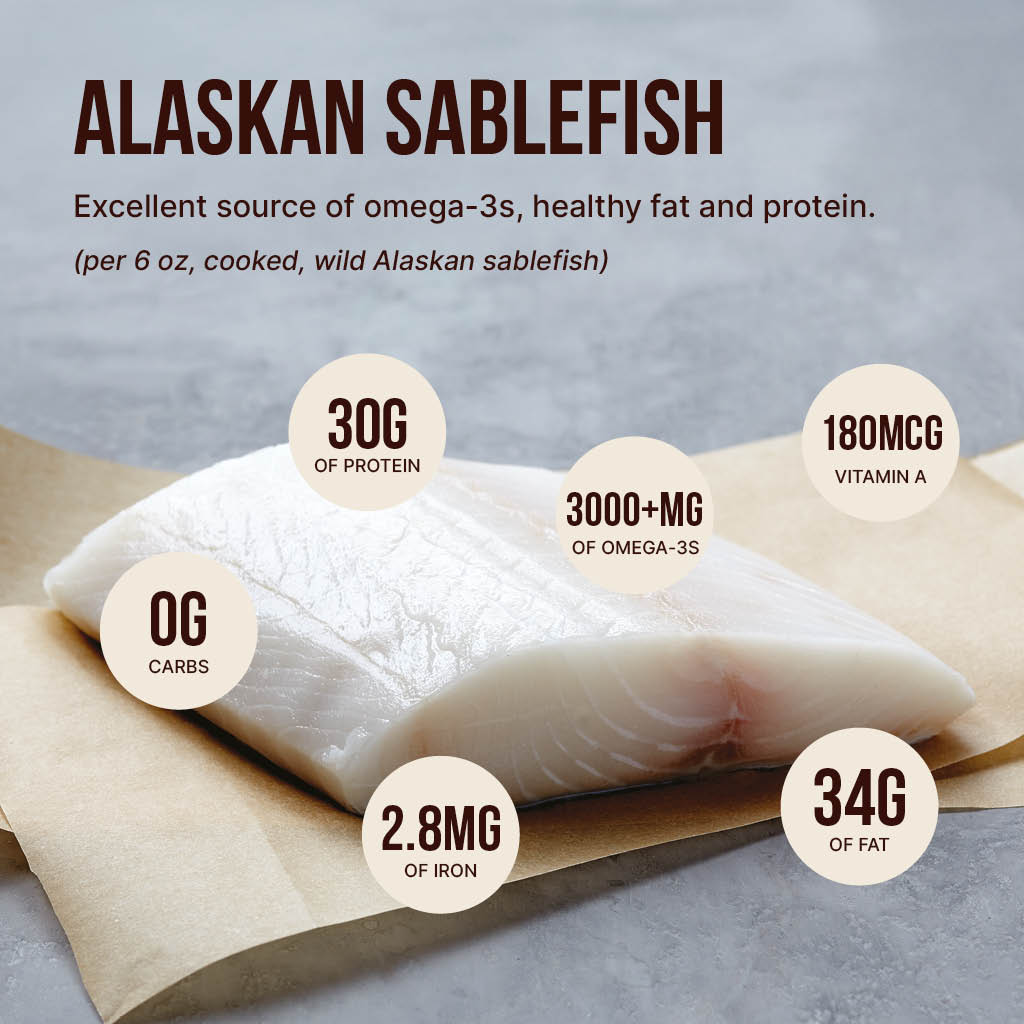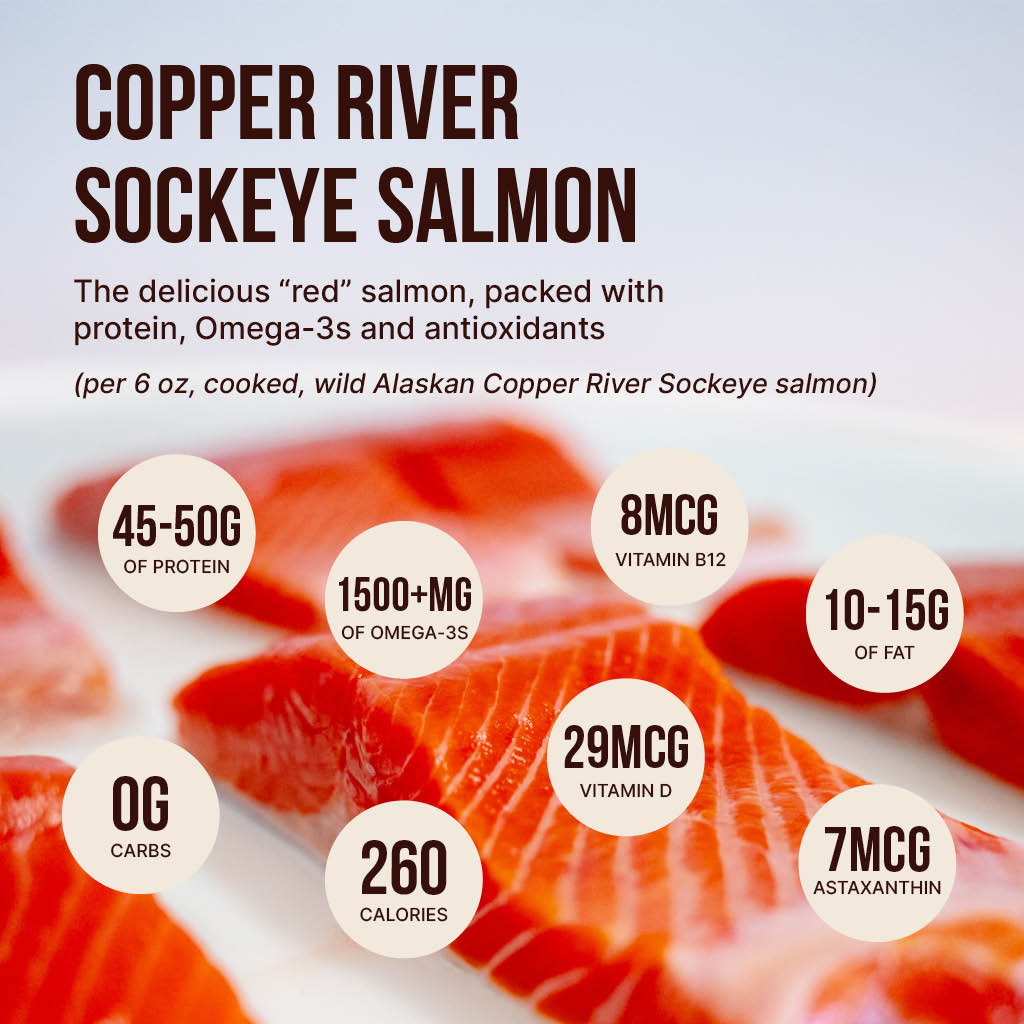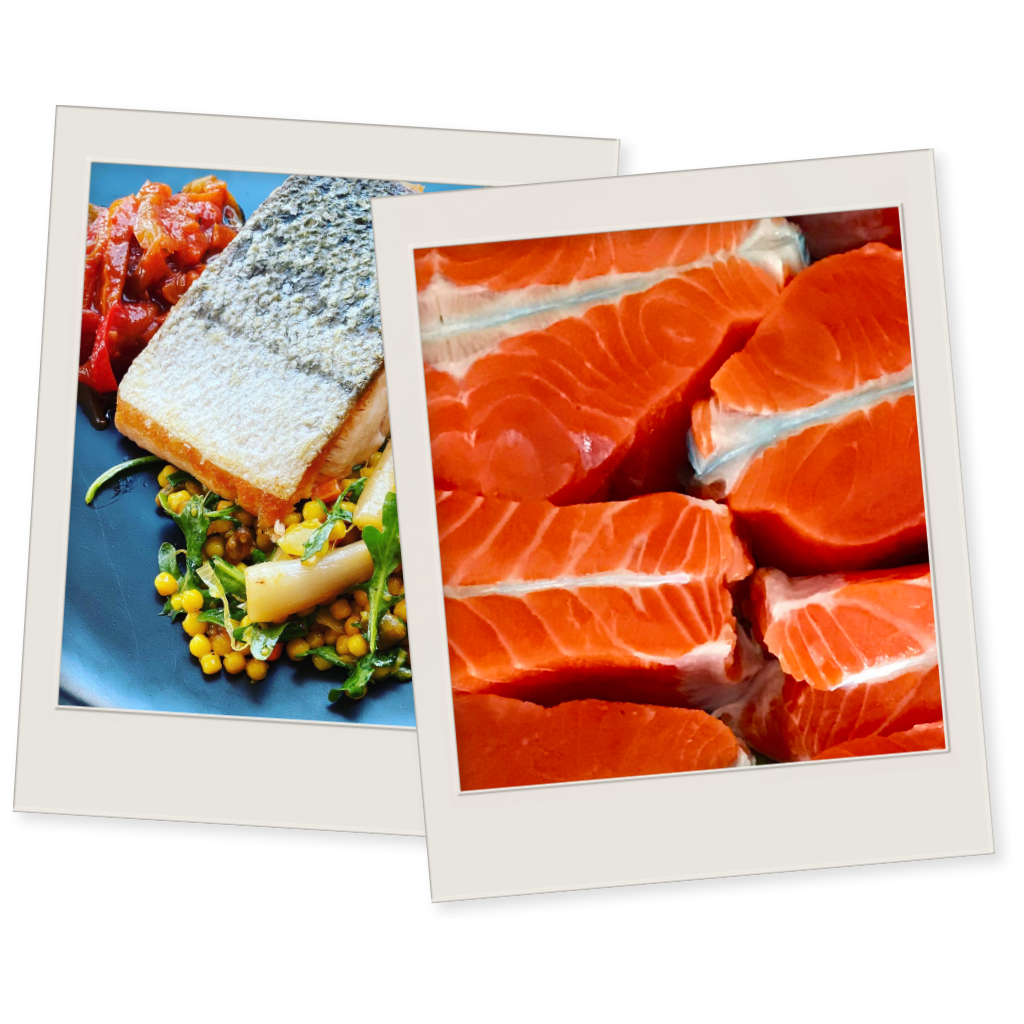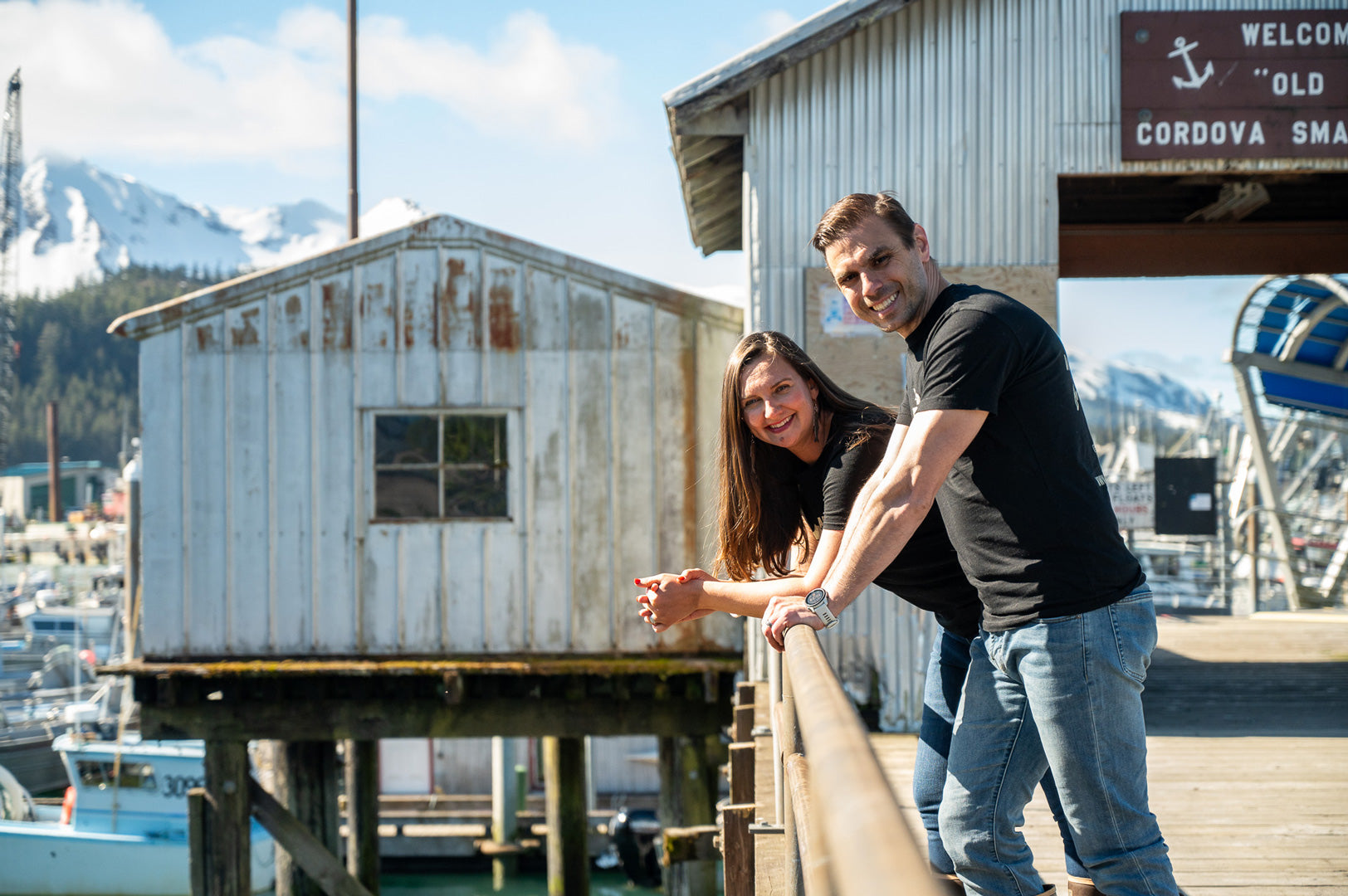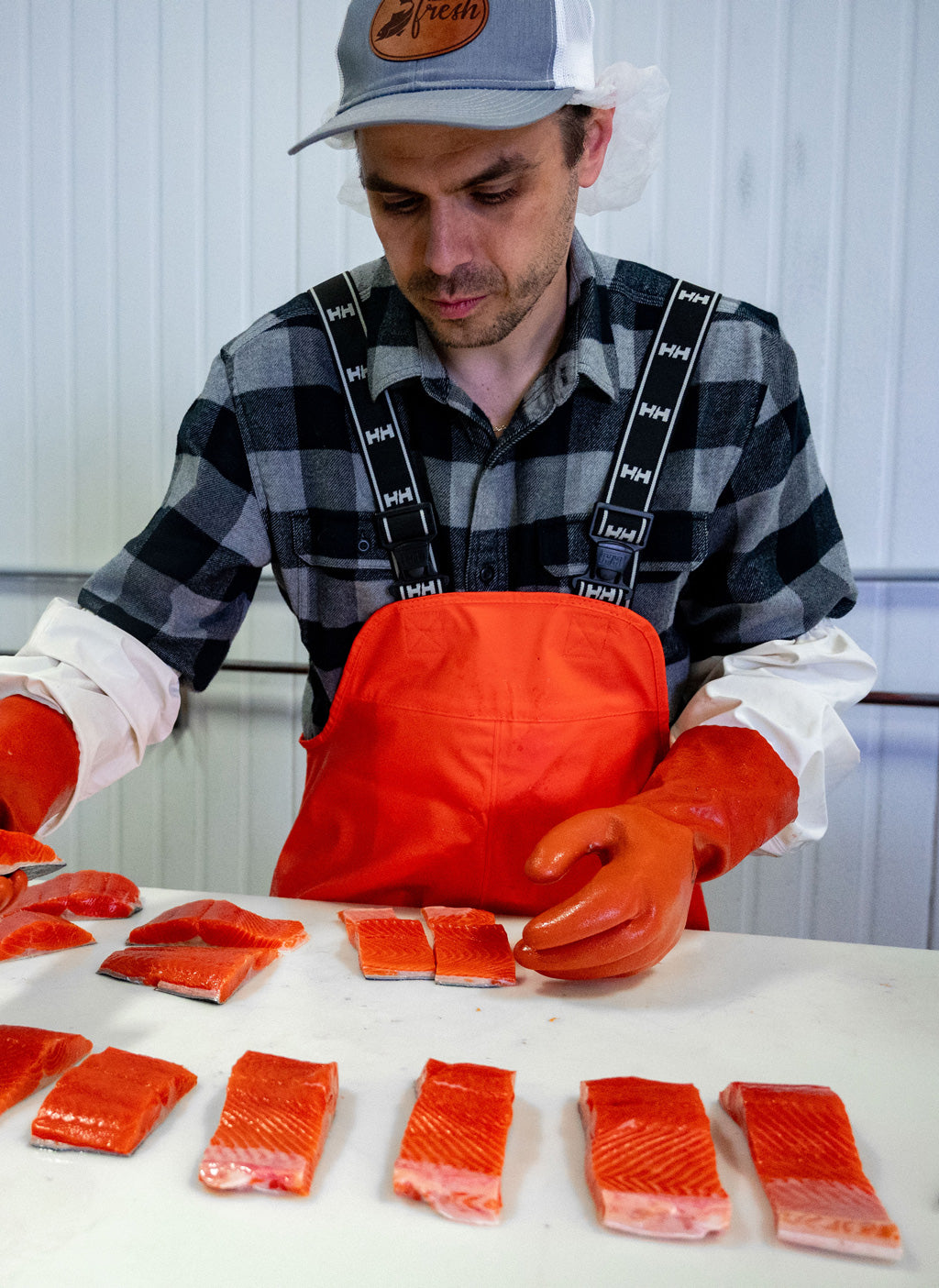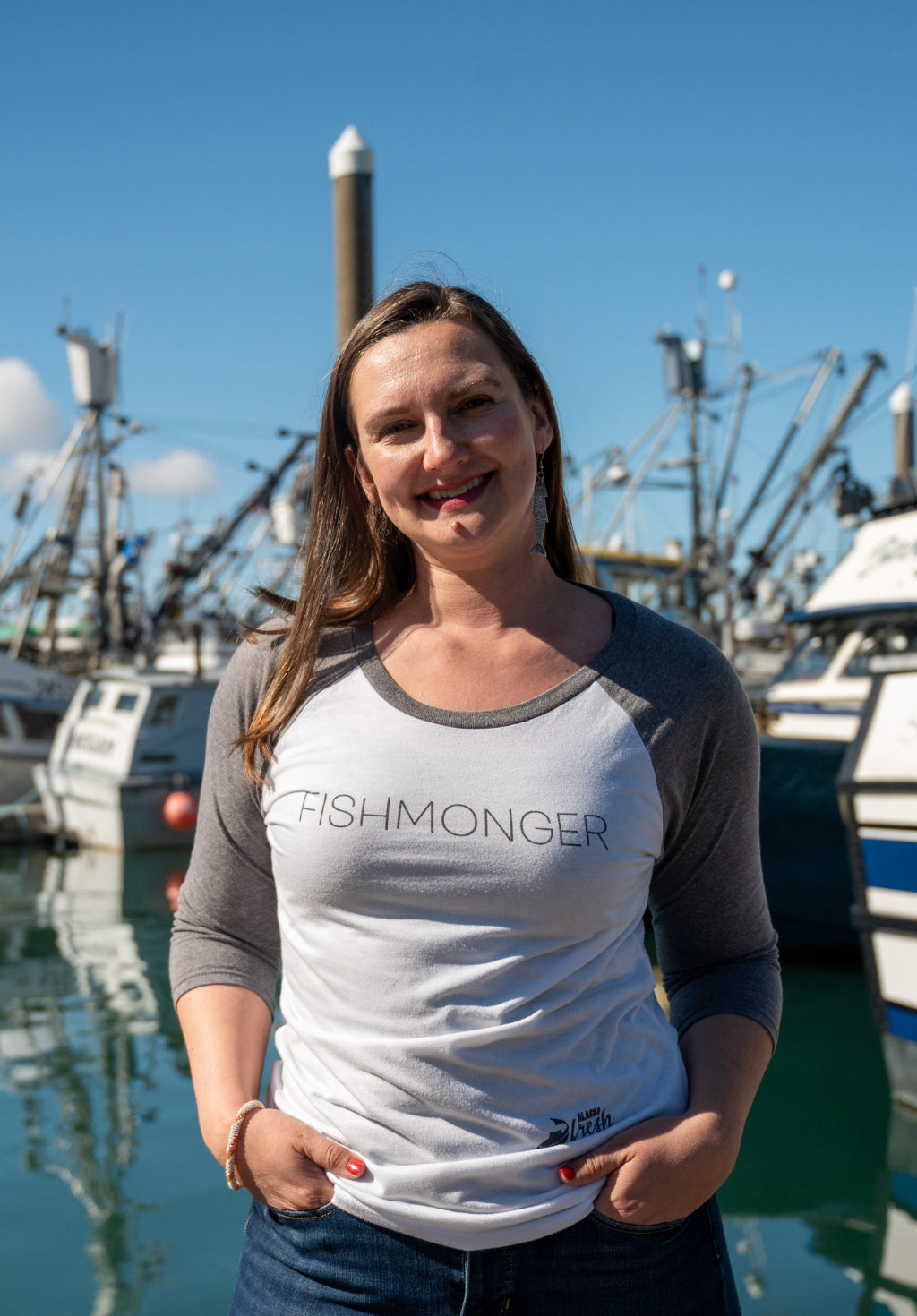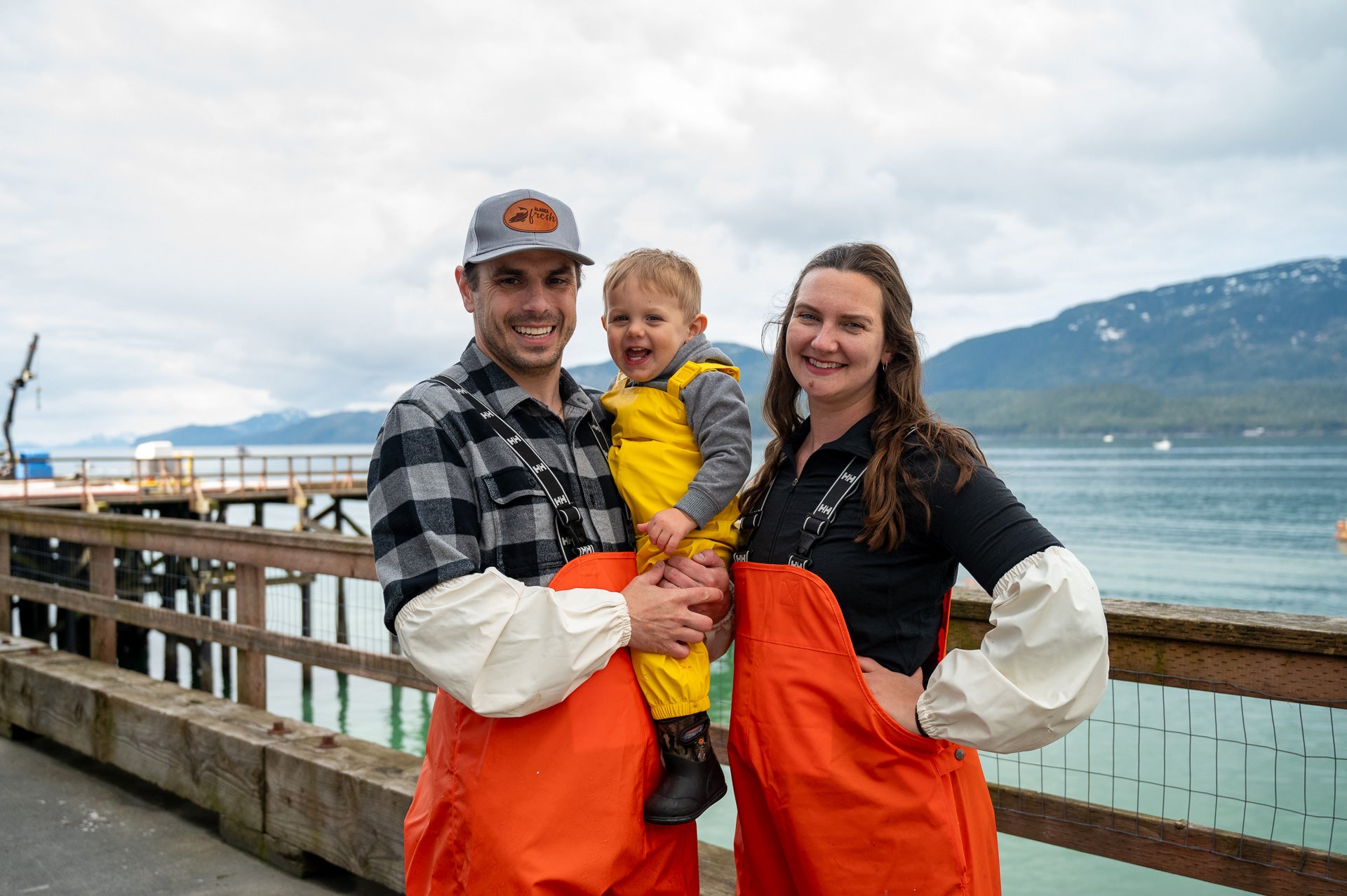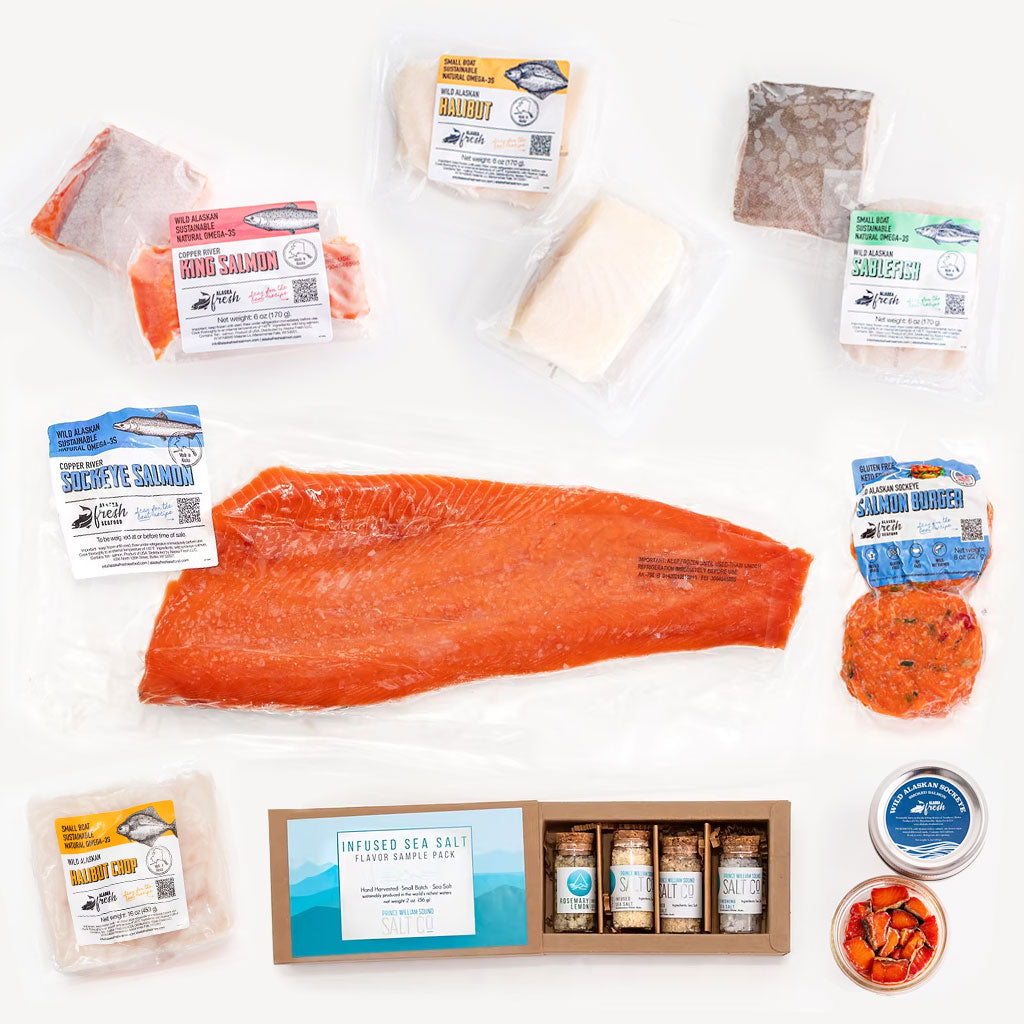
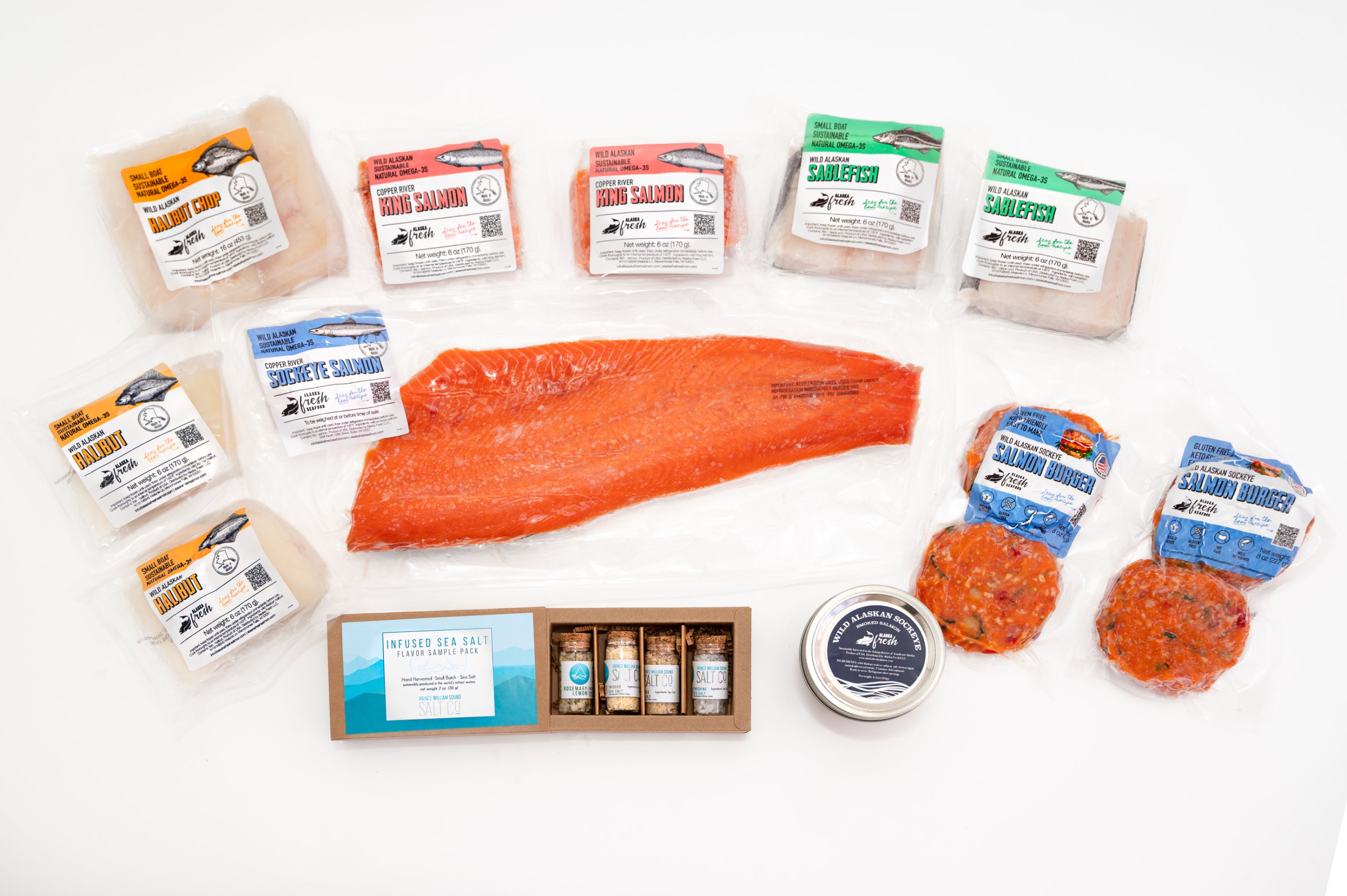
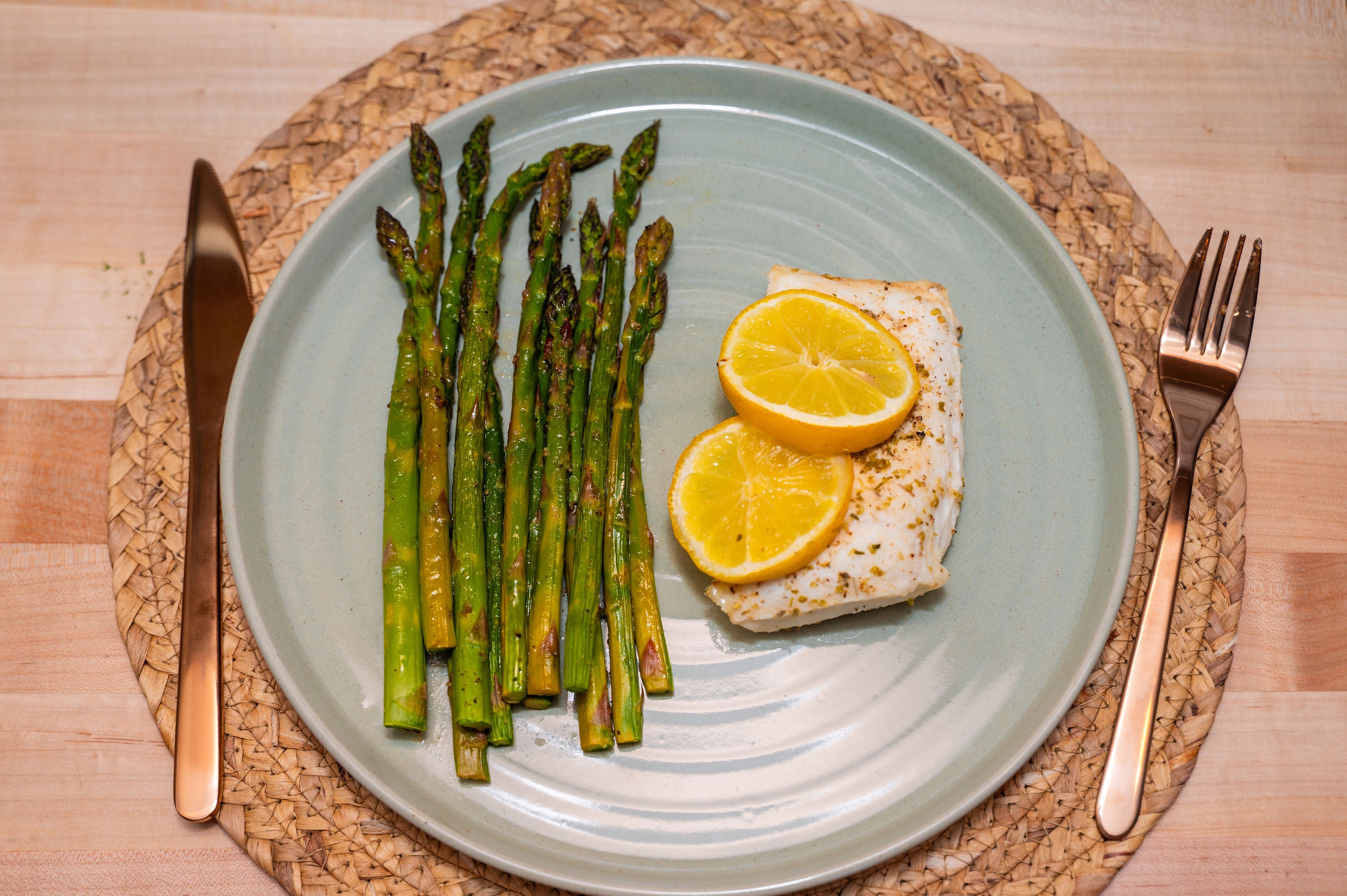
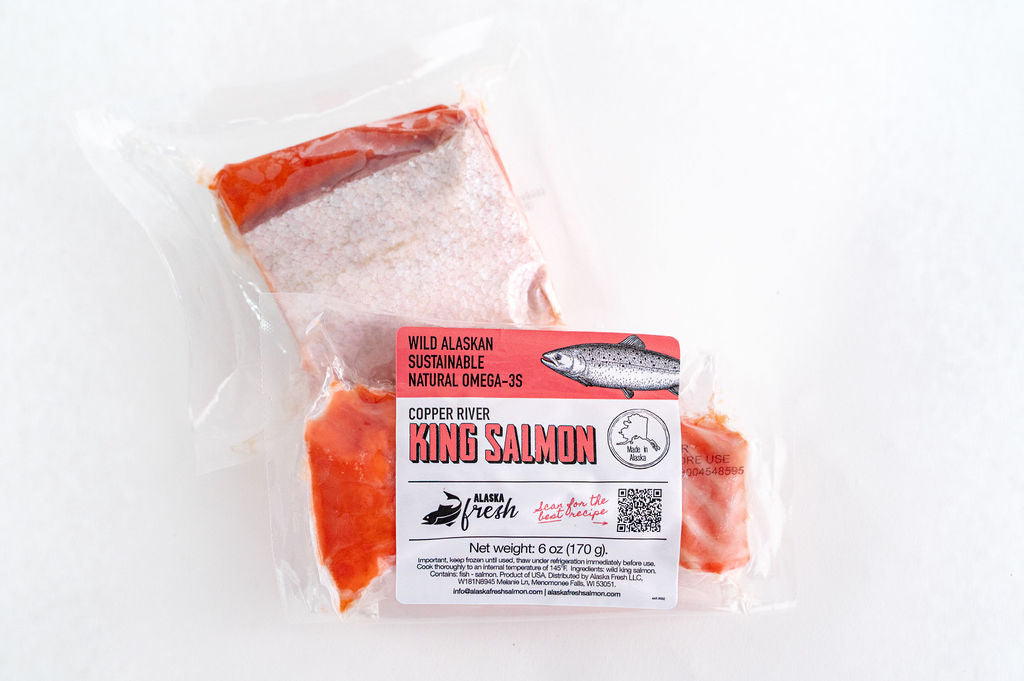
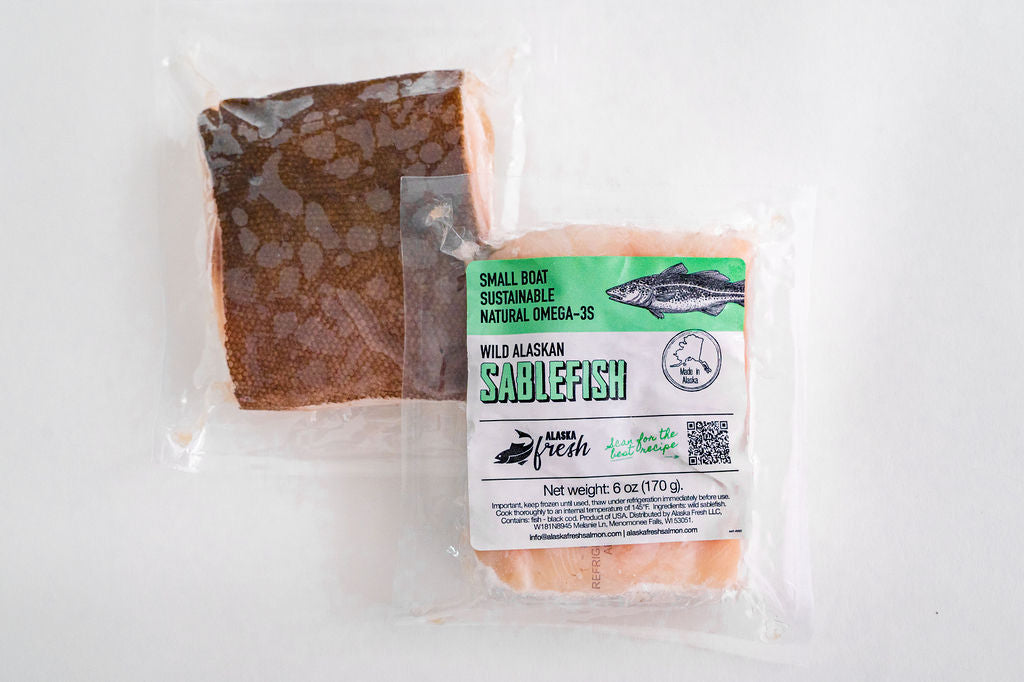
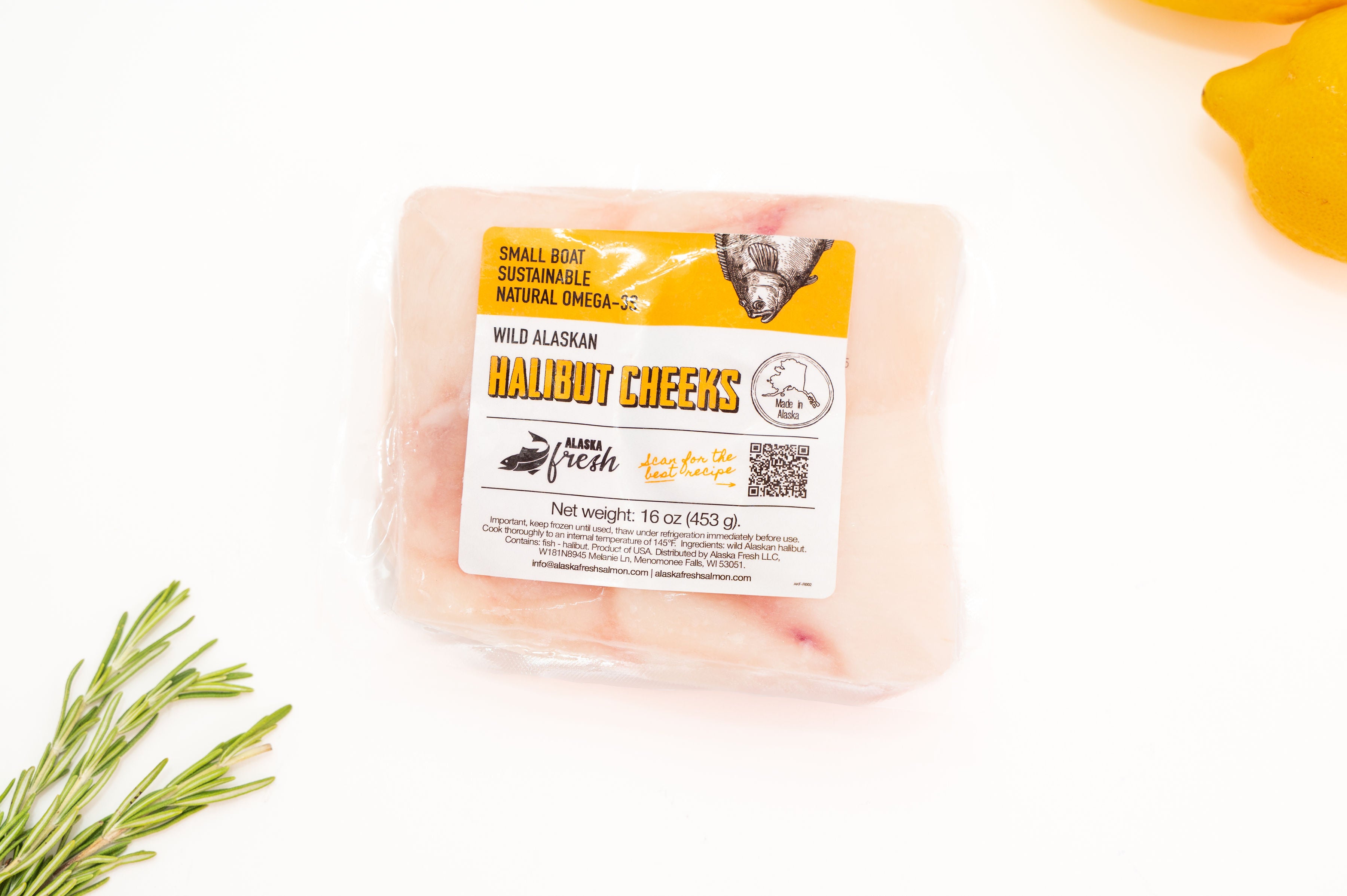
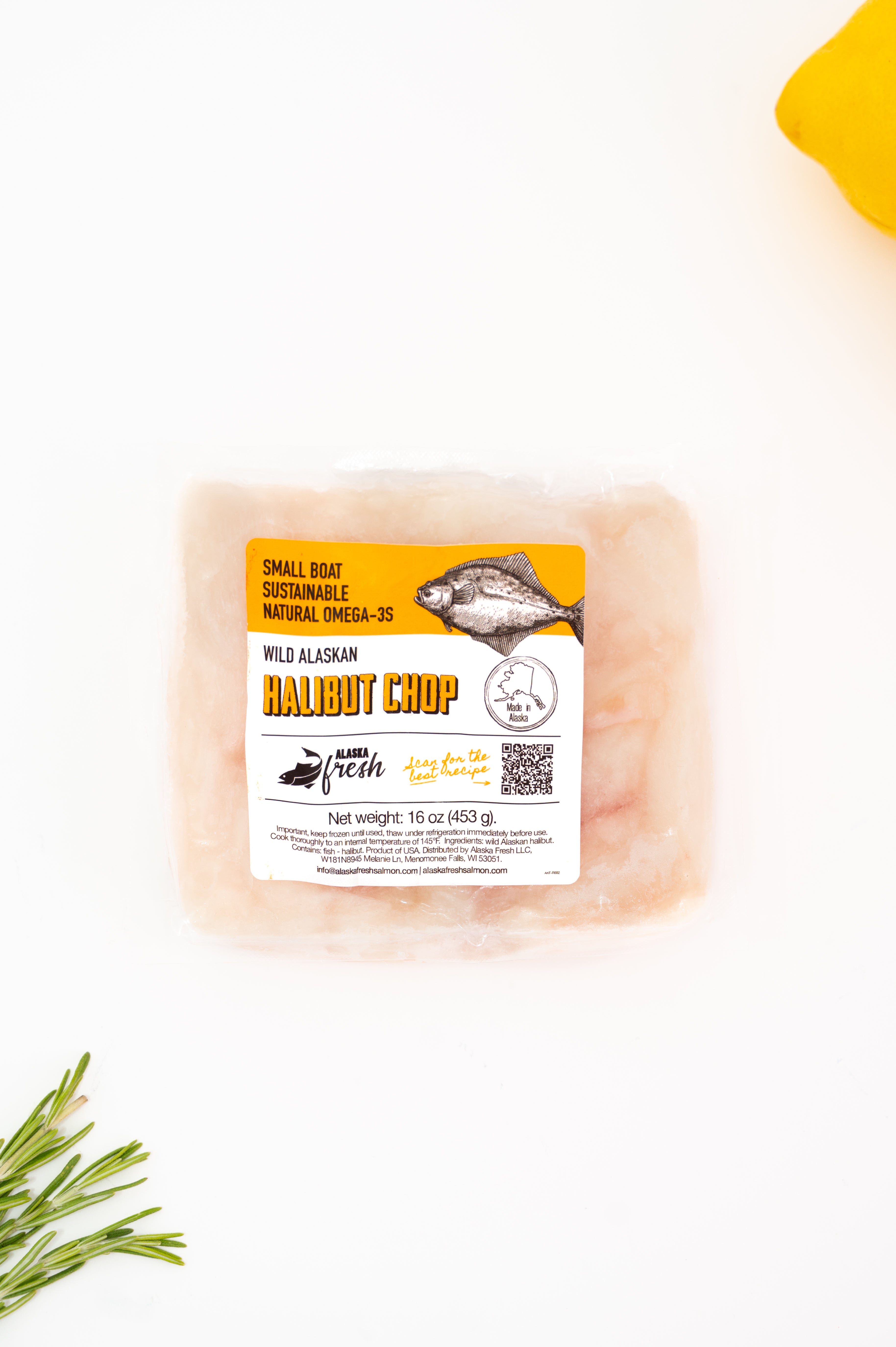
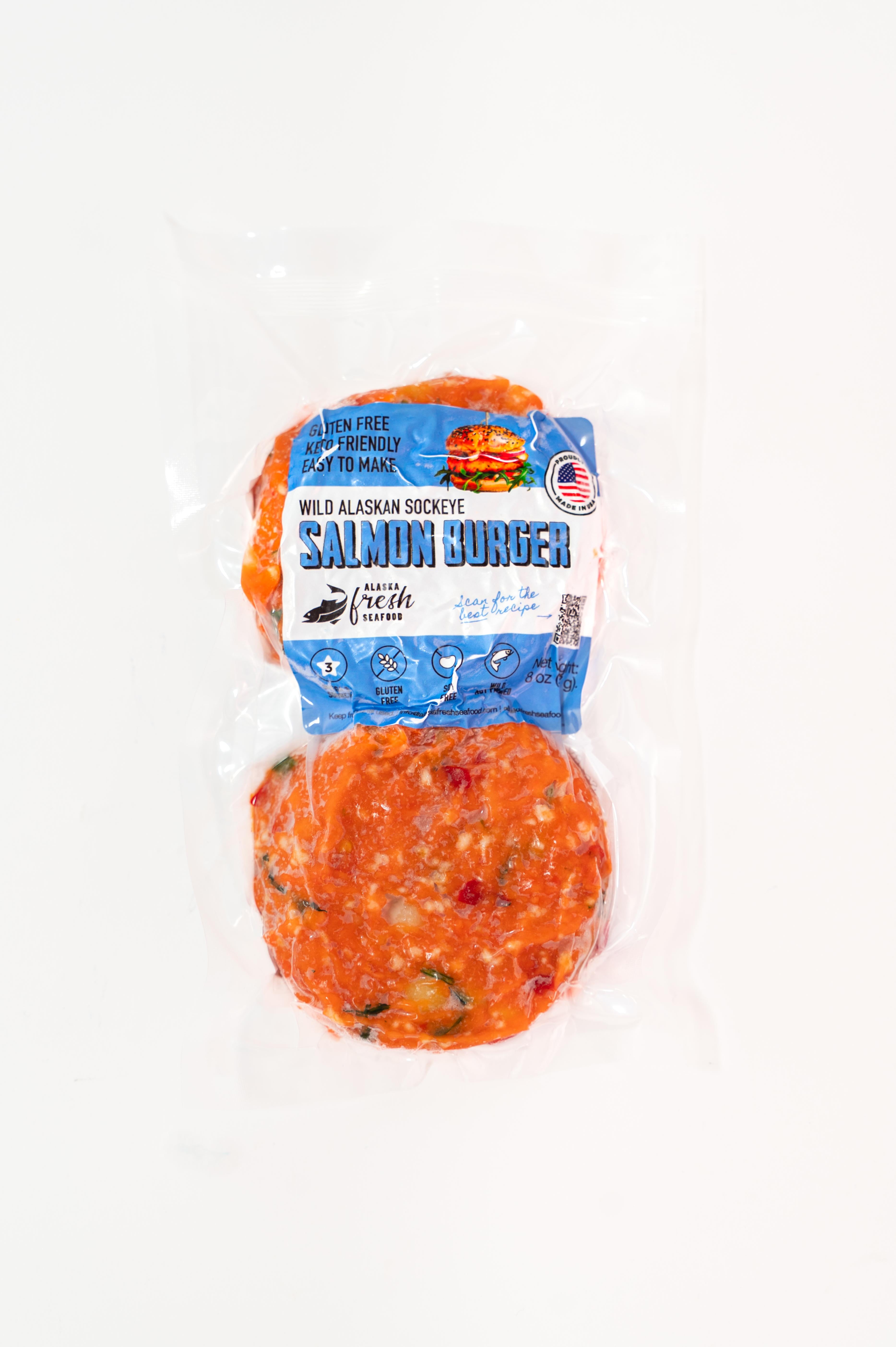
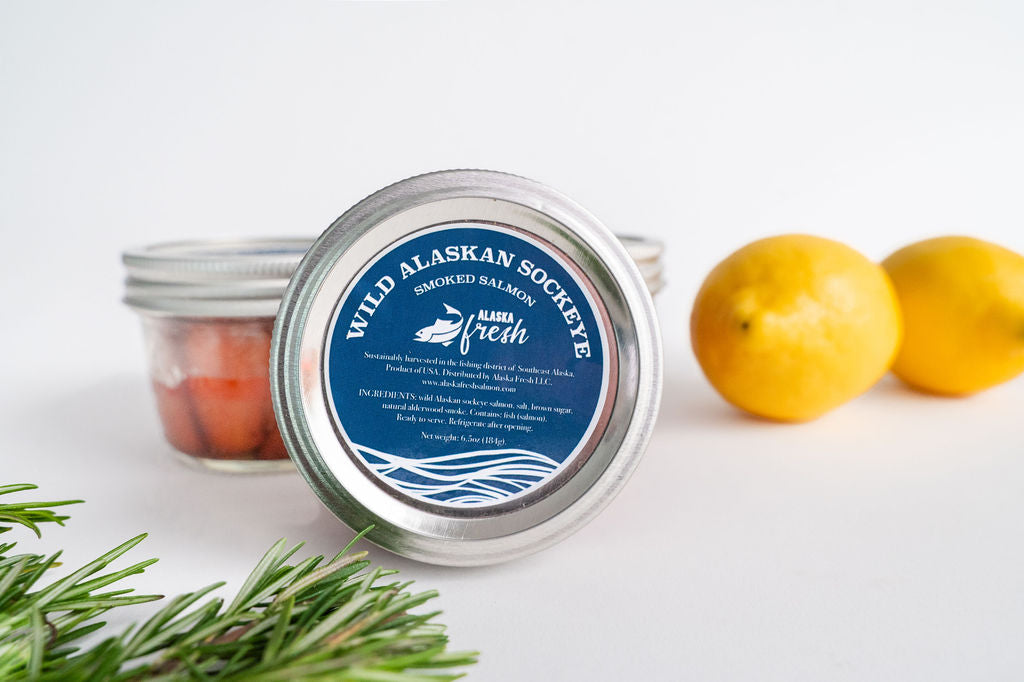
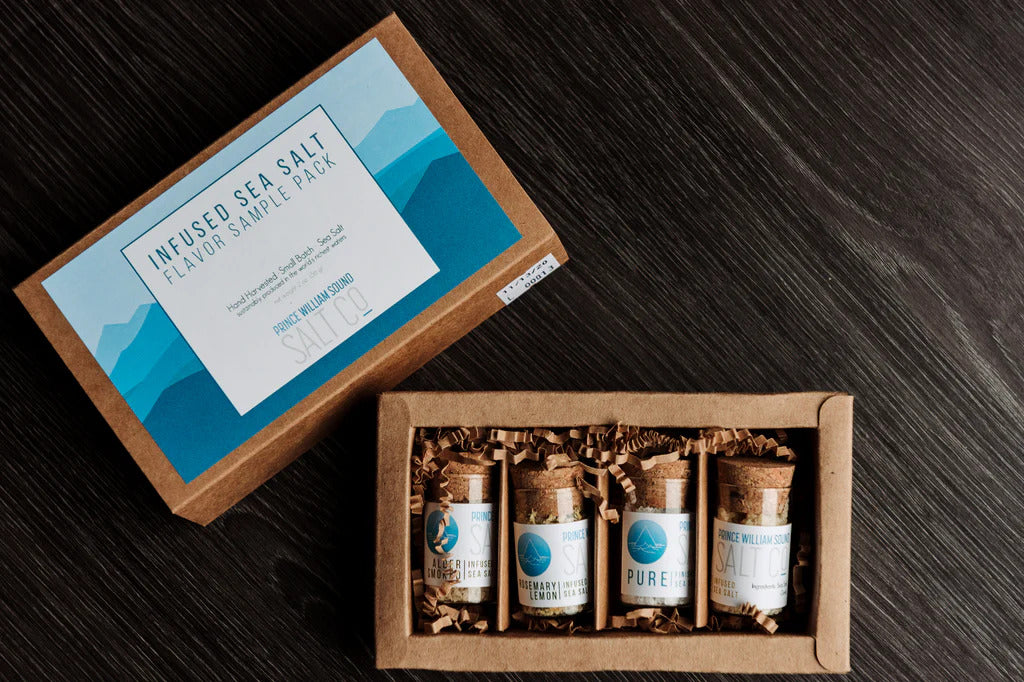
Luxury Alaska Box
The legend that made Copper River famous. Every spring, Copper River sockeye battle 300 miles of fierce glacial currents, building the rich fat, firm texture, and deep ruby-red color that made this the most famous salmon run in the world. This is the bold, clean-flavored Alaska salmon that chefs wait for all year, the one that turned "Copper River" into a mark of excellence.
Add a Gift Message
Make this gift extra special with a personalized message

Wild caught in Alaska

Flash-frozen at peak freshness

Most omega-3s in any salmon
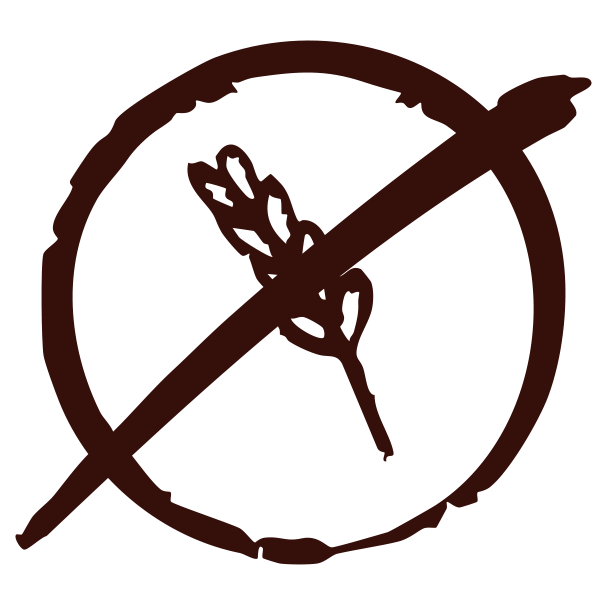
Gluten free, keto and paleo friendly

Frozen guarantee
PACKED WITH GOODNESS
Our limited edition Luxury Alaska Box is perfect gift for someone who wants to try all that we have to offer.
If you include a gift message at checkout, the box comes with a complimentary handwritten card with your personalized message.
This unique box contains:
- Copper River King Salmon (6 oz) - 2 pcs
- Wild Alaskan Halibut (6 oz) - 2 pcs
- Wild Alaskan Black Cod / Sablefish (6 oz) - 2 pcs
- Copper River Sockeye Full Fillet (~1.5 lb) - 1pc
- Wild Alaskan Halibut Chop (1 lb) - 1 pc
- Sockeye Salmon Burgers - Wild Alaskan (8 oz) - 1 pc
- Wild Alaskan Smoked Sockeye Salmon Jar (6.5 oz) - 1 pc
- Prince William Sound Salt Gift Box (4 salts) - 1 pcs
Only the true connoisseurs of wild seafood usually have access to the rare delicacy of Copper River King salmon, but now it's available to you or your loved ones in our Luxury Box. This salmon has the highest content of Omega-3s of all commercially caught salmon in the world and it's unique for its flavor, texture, and health benefits.
To add visual beauty to our box, we have included a full side of our Copper River sockeye. Our most popular salmon never disappoints with its bright red color, bold flavor, and key nutrients that include Omega-3s, proteins, vitamins, and a powerful antioxidant astaxanthin.
While the full side might be our prettiest product, the minced Copper River sockeye salmon is likely our most versatile. Scraped by hand from the backbone of the fish after it's filleted, it packs a lot of flavor and it's excellent for bowls, tacos, burritos, scrambles, burgers, and many other popular meals.
Wild Alaskan halibut cheeks are the most flavorful and delicate pieces of halibut and are often hard to find. If you want to impress someone who likes seafood, halibut cheeks are a guaranteed success. We also added 2 halibut fillets to our Luxury Box - you know, just for the halibut :)
Omega-3s are one of the main reasons people want to add seafood to their diet and wild Alaskan sablefish has more of them than almost any other fish! This underrated delicacy, also known as black cod, has flaky meat and smooth, buttery texture with a hint of sweetness that reminds you of crab legs.
Smoked Wild Alaskan Sockeye salmon jar is a true Alaskan gem, a product of a long-lasting Alaskan tradition of preserving wild seafood. The careful process preserves all the juices, flavors, and nutrients in the fish, while smoking and cooking make this product shelf stable and ready to eat. The labor-intensive production makes this product hard to find.
A Luxury Alaska Box could not be complete without our Prince William Sound salt gift box. This sea salt is harvested in the same area where our fish are caught and it was carefully designed to bring your dining experience to the next level. The salt is harvested by commercial fishermen and the process was carefully designed by the local science center to ensure the best quality with minimal impact on nature.
Check out these blog posts if you want to learn more about wild Alaskan seafood!
How to cook Copper River Salmon
Which fish is better, fresh or frozen? Let's look at wild Alaskan Salmon.
OUR FISH SOURCE
Our fish are caught exclusively by small boat Alaskan fishermen in the Copper River and Prince William Sound fishing districts just outside of Cordova, Alaska.
The men and women in our fleet are dedicated to the best handling practices, such as bleeding every fish immediately after it comes out of the water, using slushed ice or refrigerated sea water to minimize the pressure on the meat and keeping their fishholds at 32 – 36 degrees Fahrenheit to maximize the shelf life of the product while they transport and deliver their catch to our processor.
SHIPPING INFORMATION
STANDARD SHIPPING:
Your order will ship via UPS the Monday, Tuesday or Wednesday after you place your order. Your fish will arrive Tuesday - Thursday depending on your location. The orders are shipped from our hub in Milwaukee with dry ice for transit. Don’t worry, ALL fish are from Alaska! We do quality control and reduce your shipping cost by shipping from Milwaukee.
EXPEDITED SHIPPING:
If you pick expedited shipping during checkout, your order will be shipped within one business day with overnight delivery. With the exception of our shelf stable products, we are not able to ship on Fridays.
PICK-UP:
You will receive an email when your order is ready with instructions on how to coordinate your pick-up date, time, and place.
FROZEN GUARANTEE
Frozen shipments are shipped with ample dry ice to sustain the shipment duration. Frozen products need to be put in the refrigerator for immediate consumption or in the freezer for future use shortly after delivery. The dry ice is sublimating during the shipping process so your shipment may arrive with no ice left in the box, but it is good and safe to consume as long as it remains frozen.
If your shipment arrives partially thawed on the edges, it is still good and safe to consume. If the frozen products arrive completely thawed out or damaged in any other way, please take pictures and/or videos with as many visual details as possible and contact us for a possible refund or reship.
WHAT IS INCLUDED
The Wild Difference You Can See, Taste & Feel
Good For You Naturally
Recommended recipe

Wild Alaskan Halibut Ceviche
The most amazing show stopper you can bring to any hot summer gathering- HALIBUT CEVICHE.
Makes: 4 servings
Prep time: 30 minutes
Marinade time: at least 30 minutes, up to 2 hours
Ingredients
1 pack of wild Alaskan halibut nuggets or 2 halibut fillets, thawed
2 medium-sized tomatoes, diced
1/2 of red onion, diced
½ cup fresh cilantro, diced
1 small jalapeño, diced
½ cup fresh-squeezed lime juice
½ cup fresh-squeezed lemon juice
1 ½ teaspoons salt (add more to taste)
2 avocados - diced into the ceviche, or sliced and served on the side
Optional: cucumber and/or bell pepper
Directions
1. Blot excess moisture from thawed halibut with a paper towel. Place the halibut, onion, tomato, cilantro, jalapeño, and avocado (if adding) in a medium mixing bowl.
2. In a small mixing bowl, combine lime juice, lemon juice, and sea salt. Pour the mixture over the raw halibut mixture.
3. Stir gently until combined. Cover and place in the refrigerator.
4. Allow the halibut to marinate for 30 minutes to 2 hours until the ceviche is chilled, and the halibut is opaque and "cooked" through.
5. Serve the wild Alaskan halibut ceviche with tortilla chips, plantain chips, or sliced cucumbers.
Recommended drink pairings:
· Fresh-squeezed lemonade
· Lime margarita
· White wine

Skillet Copper River Sockeye Salmon with Spring Vegetables
Experience the exquisite flavors of the Copper River Sockeye Salmon with Spring Vegetables. Pan-seared to perfection, the Copper River sockeye salmon is served atop a bed of Mizuna greens, accompanied by golden potatoes and sautéed spring vegetables.
Makes: 4 servings
Prep time: 30 minutes
Marinade time: at least 30 minutes, up to 2 hours
Ingredients
1-1 1/2 lbs. Copper River sockeye salmon fillets, skin on
2 large russet potatoes, scrubbed clean and cut into about 1/4" slices, boiled just until tender
1 lb. mixed spring vegetables (pea pods, baby carrots, green onions, green beans, radishes)
Small bunch of leafy greens, such as flowering brassica, Raab, baby kale, or chard Olive oil
Salt and pepper, to taste
Mizuna or other greens for serving platter
Mustard vinaigrette (optional)
Directions
1. Pat the Copper River sockeye salmon fillet dry and sprinkle with salt and pepper on both sides.
2. Heat olive oil in a skillet over medium-high heat.
3. Add the Copper River sockeye salmon fillets, skin side down. Cook Copper River sockeye salmon fillet for about 3-4 minutes.
4. Gently turn Copper River sockeye salmon fillets over and cook Copper River sockeye salmon fillet for an additional 2-3 minutes until the flesh is opaque and flakes easily with a fork.
5. Place the Copper River sockeye salmon fillets on top of the Mizuna greens on a serving platter, and cover to keep warm.
6. Add more olive oil and sliced potatoes to the hot pan, sprinkle with salt and pepper, and cook until golden.
7. Transfer to a platter and keep warm.
8. Heat olive oil in another skillet with spring vegetables, salt & pepper, and sauté until tender-crisp.
9. Add leafy greens to skillet, salt & pepper to taste, and cook until bright green and barely tender.
10. Transfer to a serving platter and drizzle with a little mustard vinaigrette.
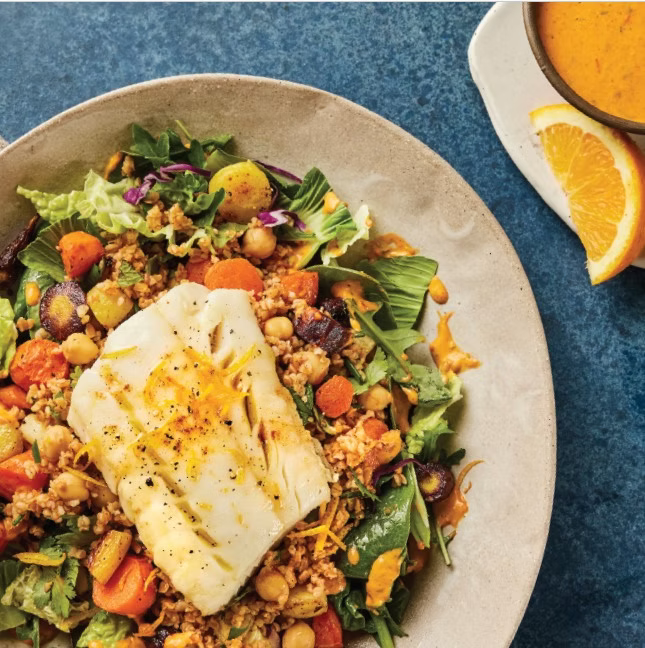
Smoky Harissa Baked Wild Alaskan Sablefish (Black Cod) Bulgur Bowl
Experience a perfect blend of flavors in this Smoky Harissa Baked Wild Alaskan Sablefish Bulgur bowl.
Prep Time: 25 minutes
Cook Time: 20 minutes
Servings: 4
Ingredients
SMOKY HARISSA AIOLI SAUCE
3/4 cup mayonnaise
1/2 lemon, zested and juiced
1 Tbsp chopped fresh parsley
2 tsp harissa seasoning
1/2 tsp ginger powder or freshly grated
1 1/2 tsp ras el hanout
Salt and pepper, to taste
Directions
In a blender, combine the lemon zest, lemon juice, harissa, mayonnaise, grated ginger, ras el hanout, olive oil, kosher salt, and black pepper. Blend for 2-3 minutes, add chopped parsley, blend for 15 seconds. Refrigerate.
FOR THE BULGUR-BEANS:
3 cups prepared bulgur wheat (or couscous)
1 (15 oz) can of garbanzo beans, drained and rinsed
1 orange, juiced and zested
2 tbsp extra virgin olive oil
Salt and pepper, to taste
FOR THE CARROTS:
1 lb tri-color carrots, large diced slices
2 tbsp olive oil
Salt and pepper, to taste
FOR THE WILD ALASKAN BLACK COD:
4 (6 oz) wild Alaskan sablefish (black cod) fillets
1 Tbsp extra virgin olive oil
Salt, to taste
8-12 cup mixed greens
Directions
1 Combine bulgur with garbanzo beans in a mixing bowl. Stir in juice from orange and olive oil then season with salt and pepper.
2 Heat oven to 425° F. Toss carrots with olive oil then season with salt and pepper. Roast carrots for about 10 minutes on a parchment-lined baking sheet until golden brown and the edges are slightly charred.
3 Reduce oven temperature to 400°. Season wild Alaskan black cod with salt; brush with 1 tablespoon olive oil. Bake on a non-stick baking sheet until cooked through, about 4-5 minutes, depending on the thickness of the fish.
4 For each serving: Place 2-3 cups of mixed greens in the bottom of a bowl. Evenly drizzle 1-2 tbsp of harissa aioli onto the greens. Place 1/4 of the total bulgur beans mix over the greens. Spoon 1 tbsp aioli where black cod will be placed and add black cod fillet. Place roasted carrots over the salad and around the wild Alaskan black cod. Brush black cod with a teaspoon of olive oil. Sprinkle on some of the orange zest. Drizzle on an additional 1 tbsp aioli.
Optional Garnish: Chopped fresh herbs.
Try our wild Alaskan sea salt (harvested from the Prince William Sound by fishermen!) in this recipe!
ASK YOUR FISHMONGER
What makes Copper River salmon special?
Copper River salmon have to swim 300 miles up the stream of an icy cold Copper River Watershed to get to their spawning grounds. They have to gather enough muscle and fat to survive this tremendous journey. The high fat content gives Copper River salmon its incredible taste, moist texture and a lot of Omega-3 acids, one of the most important nutrients in any fish.
This unique salmon is praised amongst the top chefs for its taste and texture qualities, while home cooks also enjoy the simplicity. Copper River salmon tastes so good that the only other ingredient you need is a little bit of salt.
High quality brings high demand, but whether you look for kings, sockeyes, or cohos, Copper River salmon is hard to get. Knowing its uniqueness and fragile balance in the ecosystem, everyone involved in the Copper River fishery works towards a sustainable future. Fishing season is short with areas and times regulated to guarantee the needed escapement for future populations to thrive year after year.
Fishermen are often considered lucky to be able to participate in the Copper River fishery and they are known to be a poster child of quality fish handling and temperature control.
When is Copper River salmon season? Is this from this year's catch?
Copper River king salmon has the shortest fishing season, usually from mid to late May until late June, early July. Copper River sockeyes can be caught from mid May until late July and cohos usually run from early August until late September.
Why is Copper River sockeye salmon more expensive than regular sockeye?
Copper River sockeye salmon is more expensive than regular sockeye because of where and how it’s harvested, and how it’s handled. Think of it as the “wagyu beef” of salmon. Copper River sockeye (same as Copper River coho and king) are specifically from the Copper River fishing district, in South Central Alaska, full of pristine, glacial-fed waters. The salmon swim free range for 3-7 years in the Pacific ocean to build up fat and muscle for their 300 mile journey against the strong and cold river current back to their spawning grounds in the Chugach mountains.
The fish are harvested by one person, on a small boat, each one picked from the net, by hand. There are no mass fishing boats allowed in the district. The fishery is a poster child for quality and sustainability, unlike many fisheries around the globe where fish stocks are drained.
The fishing fleet is less than 500 boats, all of which undergo specific training and protocols for how to properly handle each fish after catch with particular bleeding and slush-ice storage methods.
Fishing for Copper River salmon is an art form. The technique has not changed much over centuries, which is becoming more and more rare as working waterfronts collapse due to mismanagement - something you do not need to worry about when sourcing from the Copper River.
Why is the fish frozen?
Flash freezing fish right after catch is the only way to preserve its quality. Fish in general have very short shelf life and they start to spoil right out of the water. Bringing fish from Alaska without freezing can negatively affect the appearance, structure and taste.
It's a seasonal fish so you need to stock up in the summer to enjoy it year-round. We freeze our fish at peak freshness, as soon after the catch as possible, so when you thaw them out before cooking, they taste as fresh as they were when they came out of the ocean.
What's the best way to cook halibut without it falling apart?
Halibut is not like haddock or walleye and does not fall apart when cooking. It is a very steaky fish and maintains it’s structure when grilling, baking, pan-searing or air frying. Because our fish is sushi-grade, we always recommend to cook it for less time than you think, so as not to dry it out. Fish also continues to cook once it's removed from the heat source.
Does halibut taste 'fishy'?
We like to say that “halibut is the white fish that ruins every other white fish” because it is so darn good. It literally does not taste like fish. It is super “steaky” and mild in flavor which makes it a popular choice on restaurant menus.
I've never heard of sablefish. What is it?
Sablefish is also called Black Cod or Pacific Butterfish. It is a super healthy fish with a buttery texture and sweet flavor. It has more omega-3 fatty acids than Copper River king salmon! It may be the most underrated wild Alaskan fish on the market.
Majority of the Alaskan sablefish catch gets exported (mostly to Japan), but in recent years it has been steadily gaining popularity in the US.
What does sablefish taste like?
Imagine a super fresh high end cod that’s cooked in a lot of butter. Silky and buttery, with a very recognizable sweet taste. All you need is salt and pepper and sablefish, or black cod as a lot of people call it, will not disappoint.
How do I cook sablefish?
Like our salmon and halibut, you can just add salt and pepper and bake, pan-sear, fry, grill or air-fry and you will end up with a fantastic meal comparable to a high end restaurant. We’ll give you instructions for each cooking method with your order. Also check out this popular post - Top 5 Best Sauces for Sablefish.
Meet your Fishmongers
With 17+ years living in Cordova, Alaska, owners Adra and Juro built relationships directly with local fishermen and ran seafood processing operations, giving us the inside perspective most seafood companies simply don't have.
We hand-pick each fish from trusted boats, then partner with elite processor Copper River Seafoods (where Juro worked for 13 years) to ensure every fillet is perfectly cut, flash-frozen within hours, and vacuum-sealed to lock in peak freshness for up to two years.
While there's a myth that "never frozen" is best, the truth is unless you live on the Alaska coast, our flash-frozen fillets will taste fresher than anything that's been shipped fresh for days. We guarantee that our proven boat-to-box process delivers the quality consistency you deserve, with the personal expertise you can trust.


